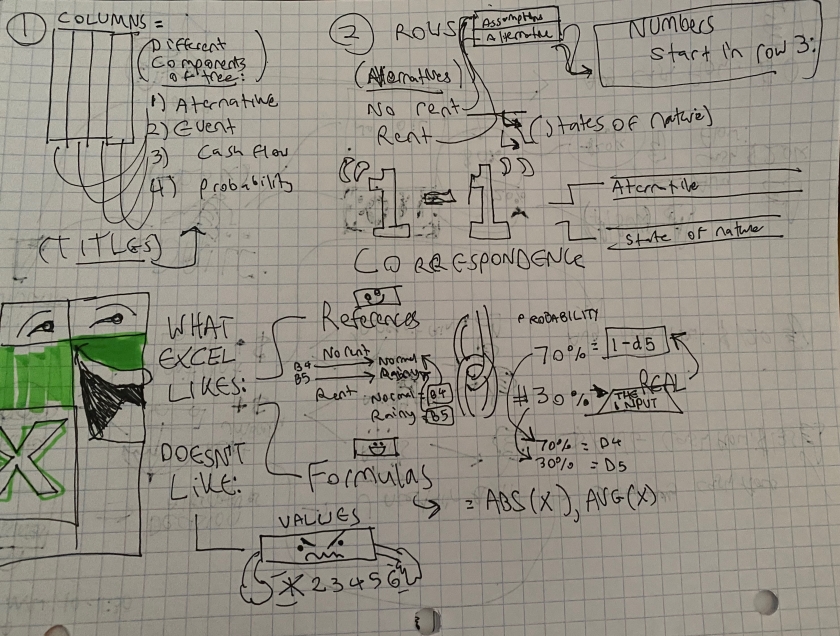Of Principalities
I had trouble with this assignment. In particular, I think I had trouble converting written ideas into drawn images. Perhaps I unknowingly chose a complex subject to capture visually. I selected my notes from my modern political thought course. The subject matter my notes address is Niccolò Machiavelli’s The Prince. The concepts Machiavelli discusses, which I consequently had to portray visually, are typically abstract and concern themselves with governance. I don’t know how to draw “governance,” though I tried to illustrate Machiavelli’s material points to his abstract rhetoric. For example, Machiavelli discusses Rome’s political structure throughout his chapter concerning mixed principalities. Accordingly, I drew a Roman pillar with an emperor-like figure flexing on top of it to represent the ideas Machiavelli discusses. Similarly, to represent Machiavelli’s conception of hereditary principalities, I drew a family tree in which progenitors die off, leaving only a single inheritor of power.
As well as illustrations of Machiavelli’s material references, I tried to incorporate details that encapsulated broader themes from my notes. For example, the crown resting on a prince’s head at the center of my drawing represents Machiavelli’s fixation on monarchical government. Similarly, I tried to depict Machiavelli’s conception of the principality, which is constantly watched over by its sovereign. I chose to do so by drawing a walled community and a pair of eyes fixated on it from atop a mountain. I also drew a bloodied dagger to represent Machiavelli’s more notable opinions regarding intrigue and the value of unconditional control in government. I do not think my drawings do justice to Machiavelli’s complex theories of government, though I don’t want to write off the practice of taking visual notes altogether. I think I might find them more effective if I took them while the professor lectured rather than while reflecting on my written notes. Perhaps I will try this for a different less conceptually abstract class.








